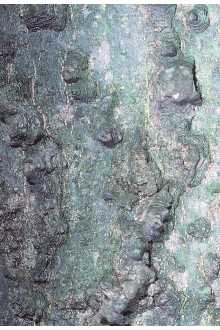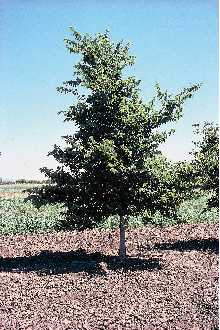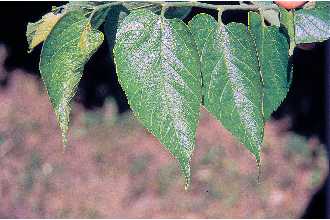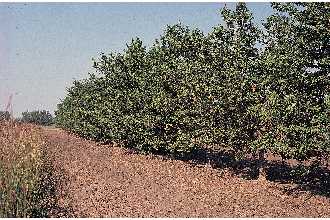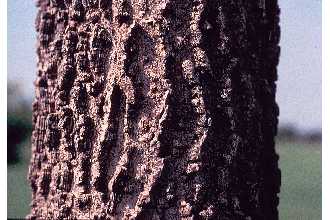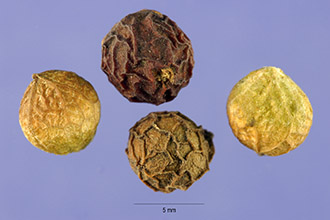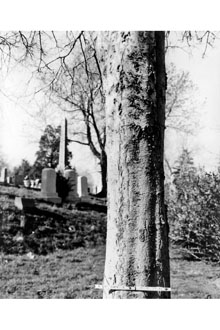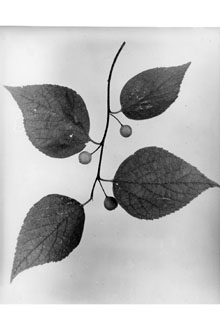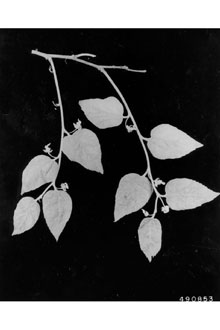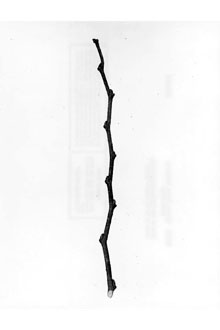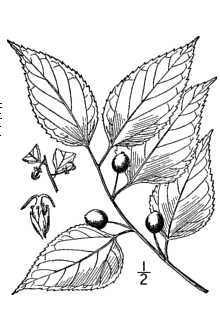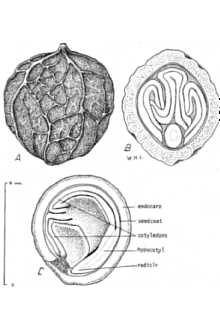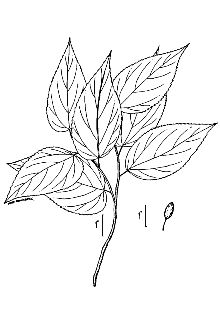Celtis canina Raf.
Scientific Name: Celtis canina Raf.
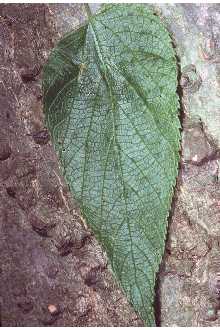
| General Information | |
|---|---|
| Usda Symbol | CECA9 |
| Group | Dicot |
| Life Cycle | Perennial |
| Growth Habits | ShrubTree, |
| Native Locations | CECA9 |
Plant Guide
Alternate Names
American hackberry, beaverwood, Celtis canina, Celtis occidentalis ssp. tenuifolia, Celtis occidentalis var. crassifolia, Celtis occidentalis var. georgiana, Celtis occidentalis var. integrifolia, Celtis occidentalis var. pumila, Celtis pumila, Celtis pumila var. georgiana, Celtis tenuifolia, false elm, hackberry, nettle tree, northern hackberry, sugar berry.
Uses
Erosion control: Common hackberry is included in windbreak plantings to control wind erosion, Additionally, its deep root system makes common hackberry useful for preventing soil erosion on disturbed sites, Ethnobotanic: Native Americans valued common hackberry for medicinal, food, and ceremonial purposes, Medicinally, the bark was decocted to serve as a gynecological aid that could induce abortion, regulate menstrual cycles, and treat venereal diseases, Bark decoctions were also taken for sore throats, The drupes of common hackberry were mixed with fat and corn to form porridge or crushed to add flavor to foods, They were also pounded into a paste, molded onto a stick and baked over an open fire, Common hackberry was used as the fuel source for the altar fire at peyote ceremonies, prayer ceremonies that utilized the hallucinogenic peyote cactus, At the beginning of each of the four stages of the ceremony, the altar fire was replenished with common hackberry wood, E,W, Chester, 2004 University of Tennessee Herbarium Ornamental: Although the features of common hackberry are not considered attractive, it is commonly used as a street tree because of its ability to withstand drought and tolerate urban environments, Common hackberry is also a bonsai species, Wildlife: Wild turkey, ring-necked pheasant, quail, grouse, lesser prairie chicken, cedar waxwing, robins, and other bird species consume common hackberry fruit, which persist throughout the winter, Small mammals also consume the fruit, Deer will browse common hackberry leaves in the absence of preferred browse species, Common hackberry provides good cover for species such as mule deer, white-tailed deer, upland game birds, small non-game birds, and small mammals, Wood products: Common hackberry is most commonly used as firewood, Use soil moisture sensors to measure the soil moisture of Celtis canina Raf.., It is not valuable as a timber tree, but is sometimes used to produce inexpensive furniture, Its wood quality is comparable to that of elm and white ash,
Legal Status
Status
Status
Common hackberry is listed as threatened in New Hampshire. Please consult the PLANTS Web site (http://plants.usda.gov) and your State Department of Natural Resources for this plant’s current status (e.g. threatened or endangered species, state noxious status, and wetland indicator values).
Description
General: Elm Family (Ulmaceae). Common hackberry is a large deciduous tree reaching 12 m to 18 m in height at maturity. It typically lives to be 150 to 200 years old and exhibits its greatest annual growth between 20 and 40 years of age. The bark is grayish and warty, and stems have a zigzag appearance. The branches tend to droop, giving mature trees a cylindrical shape and the appearance of even and equal spread of branches. Leaves are alternately arranged, simple, 7 to 12 cm long, and sharply toothed. They are dark green above, paler beneath, have asymmetrical leaf bases (oblique), and sometimes have a rough texture. Flowers are small, greenish-yellow, and emerge in April and May with the leaves. Fruit are small greenish drupes that change to dark red or black upon maturity in September and October. Distribution: Common hackberry is native to the United States. It occurs from Maine and Quebec, west to North Dakota, Wyoming and Colorado, and south to Texas and Georgia. For current distribution, please consult the Plant Profile page for this species on the PLANTS Web site (http://plants.usda.gov). Habitat: Common hackberry is the dominant species of the green ash-western snowberry plant communities in Nebraska and South Dakota and in the plains cottonwood-western snowberry communities in Montana, North Dakota, South Dakota, and Wyoming. Although it is primarily a bottomland species, it is also found within upland communities on slopes and bluffs, limestone outcrops, and rocky hillsides.
Adaptation
The USDA hardiness zones of common hackberry are 2 thru 9. Although it is difficult to determine, it is considered a late-succession or climax species because it grows well in deep shade. Seedlings are found beneath heavy canopies, where other species cannot survive. Common hackberry is able to grow in a variety of sites and soil types. Although it grows best in moist soils near stream banks and on flood plains, it will grow on dry, less fertile soils. Annual height growth will decrease in drier soils. Common hackberry can also survive long periods of drought due to its deep root system. It will not occur on sites with a permanently high water table, but mature trees can survive periods of excessive flooding. In the most favorable soil conditions, growth can exceed 0.4 m per year within the first 6 years of planting. In poor dry sites, growth is slow (less than 2.5 cm per year) and some common hackberry plants appear shrub-like. It prefers limestone soils and is not tolerant of salt spray or soils with a pH greater than 8.
Management
Common hackberry is susceptible to frost damage in the northern portions of its range. For this reason, it is best to plant it in the second or third row of either the windward or leeward half of windbreaks. A few studies indicate that fire suppresses growth and regeneration of common hackberry. Seedlings will not emerge in sunlight provided by a newly opened canopy. Low intensity fires will injure trees or reduce their reproductive potential while high intensity fires may kill some trees. Wounds caused by fire attract insects or fungi that can pose more problems for the plant.
Pests and Potential Problems
Insect and fungal infestations make common hackberry plants unattractive, but generally do not kill them. Common hackberry is host to gall-producing insects including the hackberry petiole gall psylid, hackberry nipplegall maker, hackberry bud gall maker, and the hackberry blistergall psyllid (all in the genus Pachypsylla). Leaf spot fungi frequently occur on common hackberry trees. More damaging is the witches’ broom disease that causes rosette formation on branch tips. Witches’ broom is initiated by the combined infestation of a gall mite and powdery mildew. Fungal infection by oak fungus (Armillaria mellea) causes root rot on injured trees, leading to death.
Seeds and Plant Production
Plant Production
Plant Production
Common hackberry seeds are ready for collection in September and October. They can be dried to less than 5% moisture content and remain viable throughout long storage periods. One study showed no loss in viability following 5.5 years in sealed storage at 10oC. Seeds will germinate at 21oC following 60 to 90 days of cold stratification at 5oC. Germination may increase with sulfuric acid (H2SO4) application. Treat seeds with concentrated H2SO4 for one hour, wash with water, and treat for another hour in H2SO4. Cultivars, Improved, and Selected Materials (and area of origin) The USDA NRCS Plant Materials Program has released ‘Oahe’ for urban plantings in North Dakota, Montana, South Dakota, and Minnesota. Other cultivars available from commercial sources include ‘Magnifica,’ ‘Prairie Pride,’ and ‘Chicagoland.’ These cultivars were developed for plant shape, straighter trunks, drought resistance, salt tolerance, and adaptation to compacted soils. Contact your local Natural Resources
Conservation
Service (formerly Soil Conservation Service) office for more information. Look in the phone book under ”United States Government.” The Natural Resources Conservation Service will be listed under the subheading “Department of Agriculture.”
References
Agricultural Research Center. 2004. GRIN taxonomy (http://www.ars-grin.gov/cgi-bin/npgs/html/index, 9 June 2004). USDA, Beltsville. Baskin, C.J., J.M. Baskin. 2001.
Fact Sheet
Uses
Wildlife: Birds use the mature trees for nesting sites and feed on the fruit. Young stands also provide shelter for game birds, rabbits, and deer. Erosion control: Hackberry has been used as an ornamental tree and in multi-row windbreaks. Livestock: Grazing understory species can be helpful in reducing weed competition, however if young seedlings are grazed tree defects could occur resulting in low quality timber. Timber: Hackberry has limited value in the manufacture of paneling and furniture.
Status
Please consult the PLANTS Web site and your State Department of Natural Resources for this plant’s current status (e.g. threatened or endangered species, state noxious status, and wetland indicator values).
Description
Celtis occidentalis L., common hackberry, varies in size from a shrub to a tree in excess of 100 feet tall. It is widespread in the United States east of the Rocky Mountains. Hackberry grows best on moist alluvial soils, and occurs only as scattered trees mixed with other hardwoods. The leaves are 2 ½ to 4 inches long, and 1 ½ inches wide, oval to lance-shaped, and resemble those of the elm but are more sharply pointed. The bark is grayish brown, with characteristic corky warts or ridges becoming somewhat scaly. The fruit is 1/4 inch to 1/3 inch in diameter, oval to somewhat round, dark red or purple, ripening in September and October, but remaining on the tree for several months.
Adaptation and Distribution
Distribution , Use soil moisture sensors to measure the soil moisture of Celtis canina Raf..
Distribution
Hackberry is commonly found on rich, moist sites along stream banks or on flood plains, but will perform well under more adverse conditions. It tolerates alkaline or acid soil conditions, full sun, and wind. It grows in winter hardiness zones 2 through 8. New growth is subject to spring frost injury. Common hackberry requires at least 14 inches annual precipitation. © William S. Justice Smithsonian Institution @USDA NRCS PLANTS Hackberry is distributed throughout the eastern and midwestern United States. For a current distribution map, please consult the Plant Profile page for this species on the PLANTS Website.
Establishment
Bareroot seedlings of hackberry grown under standard nursery practices exhibit a degree of dormancy. Planting material should be spring lifted followed by sweat treatments for one week at 60 °F, just prior to planting. The sweating procedure involves placing the seedlings in moist sand or peat moss and covering with plastic. Conservation grade stock can be either 1 or 2 years old and 12 to 24 inches tall, with a caliper of 3/16 to 1/2 inch.
Management
Grazing should be controlled during establishment. Without protective netting, deer and rabbits will severely damage the young seedlings. Weed competition should be controlled by grazing or by using approved herbicides. Mature seeds can be hand-picked in September and October. Hackberry seeds exhibit dormancy which can be overcome with stratification in moist sand at 41 °F for 90 days or by fall planting. Fermenting the fruit for 3 days and de-pulping before stratification improves germination.
Plant Traits
Growth Requirements
| Cold Stratification Required | Yes |
|---|---|
| Hedge Tolerance | Medium |
| Hedge Tolerance | Medium |
| Frost Free Days, Minimum | 120 |
| Frost Free Days, Minimum | 120 |
| Fire Tolerance | Low |
| Fire Tolerance | Low |
| Fertility Requirement | Medium |
| Fertility Requirement | Medium |
| Drought Tolerance | High |
| Drought Tolerance | High |
| Cold Stratification Required | Yes |
| Temperature, Minimum (°F) | -47 |
| CaCO3 Tolerance | Medium |
| CaCO3 Tolerance | Medium |
| Anaerobic Tolerance | Medium |
| Anaerobic Tolerance | Medium |
| Adapted to Medium Textured Soils | Yes |
| Adapted to Medium Textured Soils | Yes |
| Adapted to Fine Textured Soils | Yes |
| Adapted to Fine Textured Soils | Yes |
| Adapted to Coarse Textured Soils | Yes |
| Adapted to Coarse Textured Soils | Yes |
| Moisture Use | Low |
| Temperature, Minimum (°F) | -43 |
| Shade Tolerance | Tolerant |
| Shade Tolerance | Tolerant |
| Salinity Tolerance | Low |
| Salinity Tolerance | Low |
| Root Depth, Minimum (inches) | 36 |
| Root Depth, Minimum (inches) | 36 |
| Precipitation, Minimum | 14 |
| Precipitation, Minimum | 14 |
| Precipitation, Maximum | 64 |
| Precipitation, Maximum | 60 |
| Planting Density per Acre, Minim | 170 |
| Planting Density per Acre, Minim | 170 |
| Planting Density per Acre, Maxim | 300 |
| Planting Density per Acre, Maxim | 300 |
| pH, Minimum | 6.0 |
| pH, Minimum | 4.5 |
| pH, Maximum | 8.0 |
| pH, Maximum | 7.8 |
| Moisture Use | Low |
Morphology/Physiology
| Active Growth Period | Spring and Summer |
|---|---|
| Toxicity | None |
| Toxicity | None |
| Shape and Orientation | Erect |
| Fire Resistant | No |
| Foliage Texture | Coarse |
| Foliage Texture | Coarse |
| Foliage Porosity Winter | Porous |
| Foliage Porosity Winter | Porous |
| Foliage Porosity Summer | Dense |
| Foliage Porosity Summer | Dense |
| Foliage Color | Green |
| Foliage Color | Green |
| Flower Conspicuous | No |
| Flower Conspicuous | No |
| Flower Color | Green |
| Flower Color | Green |
| Resprout Ability | Yes |
| Fire Resistant | No |
| Fall Conspicuous | Yes |
| Fall Conspicuous | Yes |
| Coppice Potential | No |
| Coppice Potential | No |
| C:N Ratio | High |
| C:N Ratio | High |
| Bloat | None |
| Bloat | None |
| Active Growth Period | Spring and Summer |
| Shape and Orientation | Erect |
| Fruit/Seed Color | Purple |
| Resprout Ability | Yes |
| Nitrogen Fixation | None |
| Nitrogen Fixation | None |
| Low Growing Grass | No |
| Low Growing Grass | No |
| Lifespan | Moderate |
| Lifespan | Moderate |
| Leaf Retention | No |
| Leaf Retention | No |
| Known Allelopath | No |
| Known Allelopath | No |
| Height, Mature (feet) | 50.0 |
| Height, Mature (feet) | 60.0 |
| Fruit/Seed Color | Purple |
| Fruit/Seed Conspicuous | No |
| Fruit/Seed Conspicuous | No |
| Growth Form | Single Stem |
| Growth Form | Single Stem |
| Growth Rate | Rapid |
| Growth Rate | Rapid |
| Height at 20 Years, Maximum (fee | 25 |
| Height at 20 Years, Maximum (fee | 26 |
Reproduction
| Propagated by Cuttings | Yes |
|---|---|
| Propagated by Seed | Yes |
| Propagated by Seed | Yes |
| Propagated by Sod | No |
| Propagated by Sod | No |
| Propagated by Sprigs | No |
| Propagated by Sprigs | No |
| Propagated by Tubers | No |
| Propagated by Tubers | No |
| Fruit/Seed Persistence | Yes |
| Seed per Pound | 43000 |
| Seed per Pound | 43000 |
| Seed Spread Rate | Moderate |
| Seed Spread Rate | Moderate |
| Seedling Vigor | Medium |
| Seedling Vigor | Medium |
| Small Grain | No |
| Small Grain | No |
| Vegetative Spread Rate | None |
| Vegetative Spread Rate | None |
| Propagated by Corm | No |
| Propagated by Cuttings | Yes |
| Bloom Period | Mid Spring |
| Bloom Period | Mid Spring |
| Commercial Availability | Routinely Available |
| Commercial Availability | Routinely Available |
| Fruit/Seed Abundance | High |
| Fruit/Seed Abundance | High |
| Fruit/Seed Period Begin | Summer |
| Fruit/Seed Period Begin | Summer |
| Fruit/Seed Period End | Fall |
| Fruit/Seed Persistence | Yes |
| Propagated by Bare Root | Yes |
| Propagated by Bare Root | Yes |
| Propagated by Bulb | No |
| Propagated by Bulb | No |
| Propagated by Container | Yes |
| Propagated by Container | Yes |
| Propagated by Corm | No |
| Fruit/Seed Period End | Fall |
Suitability/Use
| Palatable Browse Animal | Medium |
|---|---|
| Palatable Browse Animal | Medium |
| Palatable Graze Animal | Low |
| Palatable Graze Animal | Low |
| Palatable Human | No |
| Palatable Human | No |
| Post Product | No |
| Post Product | No |
| Protein Potential | Low |
| Protein Potential | Low |
| Pulpwood Product | No |
| Pulpwood Product | No |
| Veneer Product | No |
| Veneer Product | No |
| Nursery Stock Product | Yes |
| Nursery Stock Product | Yes |
| Naval Store Product | No |
| Naval Store Product | No |
| Lumber Product | Yes |
| Lumber Product | No |
| Fuelwood Product | High |
| Fuelwood Product | High |
| Fodder Product | No |
| Fodder Product | No |
| Christmas Tree Product | No |
| Christmas Tree Product | No |
| Berry/Nut/Seed Product | No |
| Berry/Nut/Seed Product | No |

